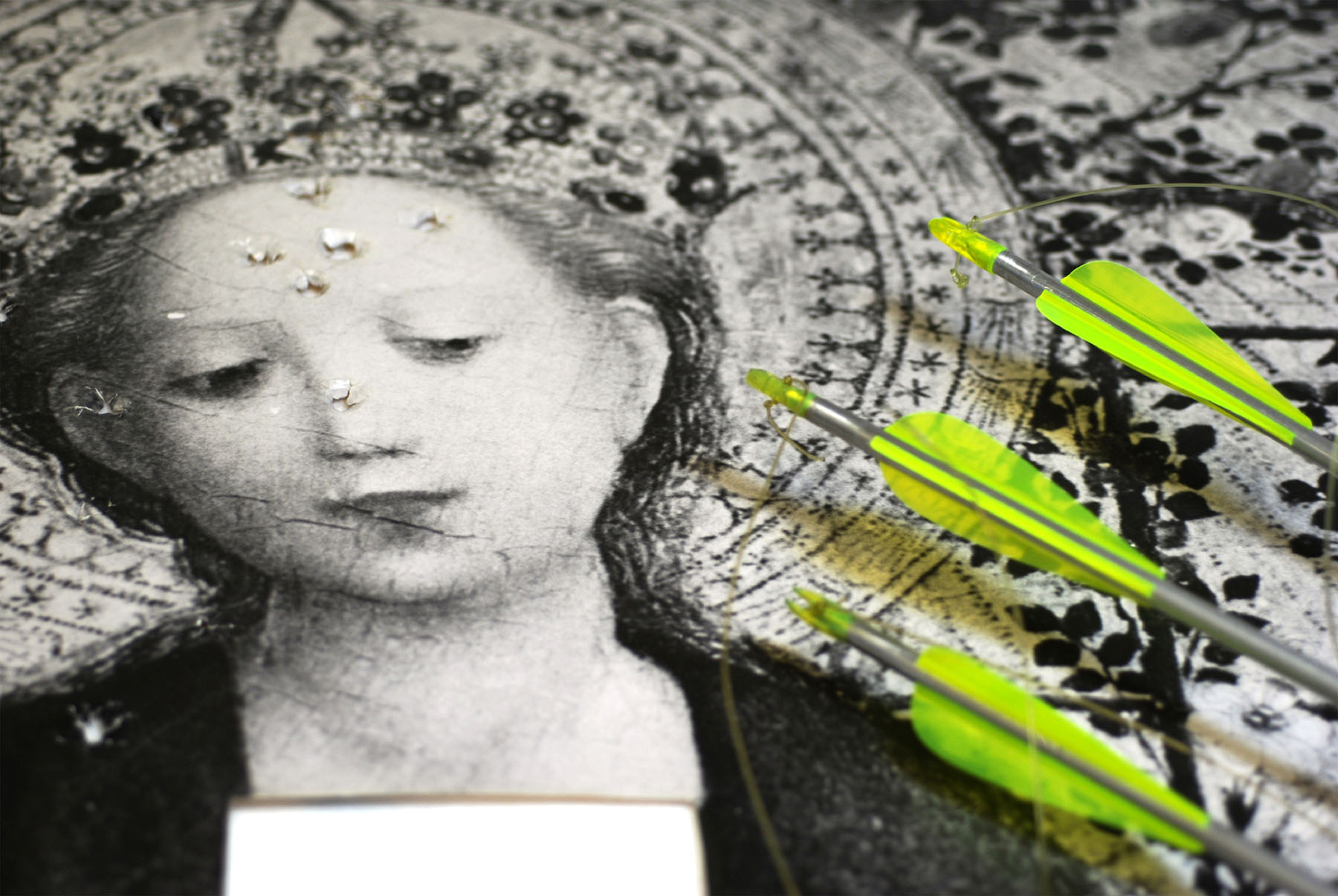 |
|
|
 |
|
The arrows (2007)
creator(s) Gunnar Heydenreich (conservator); Franziska Stoldt (conservation student)
contributor(s) Thea B. van Oosten (conservation scientist); Suzan de Groot (conservation scientist)
Condition and concept:
While the aluminium arrows, plastic nocks and strings are in a visibly aged but relatively stable condition, the glued on polyester urethane flights have turned brown and have almost entirely decomposed due to ageing of the material. As the aluminium shafts without flights are barely recognisable as arrows and the whole appearance of the installation has been substantially impaired by this, all those concerned were unanimously agreed that the plastic flights had to be replaced.
For this various options were discussed and looked at: 1. Replacement with new flights of a more ageing-resistant plastic or 2. replacement with flights of identical material. Flights of more durable plastic obtainable commercially (polyether urethane) differ markedly in form and colour from the original flights. Taking impressions of original flights and recasting with a more ageing-resistant plastic was in view of the possibility of using flights of an identical material considered relatively expensive and set aside for the time being. A further search for appropriate flights revealed that a manufacturer in the USA (Mullan Archery, Oakwood) still manufactures polyester urethane flights in virtually the same form and similar colour today. Probably Ulrike Rosenbach was then already using flights by this manufacturer, because according to the specialist trade it has been delivering flights of this kind to Germany for several decades. An enquiry at Mullan Archery whether the flights could be manufactured in a more ageing-resistant plastic in a smaller quantity was rejected for technical reasons. Since the plastic of the flights now used (polyester urethane) essentially matches that of the deteriorated original material, it will probably show the same ageing behaviour, i.e. in a few years time the new flights will likewise decompose.
Treatment:
200 polyester urethane flights were ordered, 56 as replacements for the degraded flights and the rest stored in cool, dark conditions for later use. Furthermore, the copy-casting of one arrow in a more durable material will serve as a model for the future.
The remains of the degraded flights were to a great extent successfully removed from the arrows mechanically. Adhesive residues were removed with acetone. All the arrows and strings were cleaned with distilled water and the partly bent strings smoothed out by means of heat and pressure. A missing nock was replaced with a standard nock of the same colour; likewise two missing strings were replaced with yellow-green fishing line.
The new flights of identical material were fastened on by means of a commercially available fletching tool and Plexigum PQ 610, 30% in Shellsol T. The intensive yellow colouring of the new flights triggered a further discussion about how far their present appearance is in keeping with the installation with its differently aged components. There was also uncertainty whether the dayglow pigments were produced and used in this intensity in the 1970's. The new flights presumably glow more brightly than the ones originally used, as is shown by a comparison of flights and nocks in a colour illustration from the 1970's. Moreover, the contrast between the new flights and the aged components of the installation is greater now than was originally the case. Since, however, the flights are being subjected to natural ageing, a gradual assimilation can be expected. Various flight-colouring tests were conducted to reduce the intensity of the glow. Finally, it was jointly decided not to stain the flights. The main arguments for this were that the intense colouring of the dayglow pigments points up the dynamics of the performance, that the reference to the colouring of the Amazon film still which the artist wants is being recreated and that the "shock colouring" in combination with the black-and-white of the target, performance photographs and the video picks up the design element of contrast on which the form and content of the work are based.
 Copyright Protected Copyright Protected
|